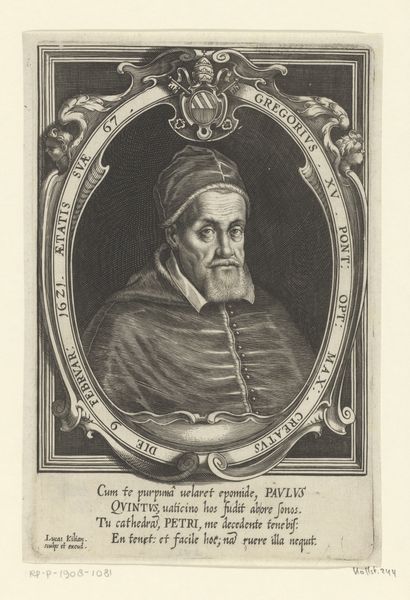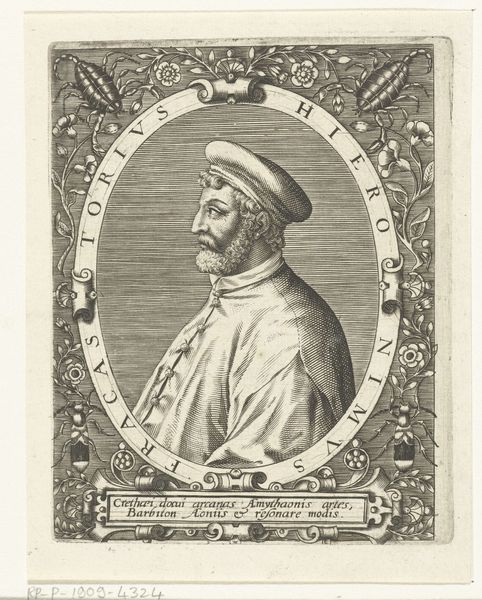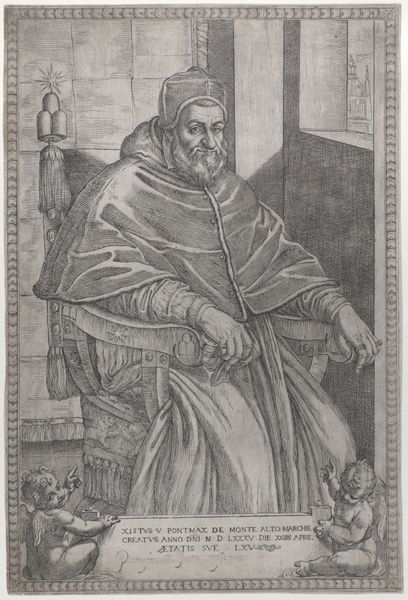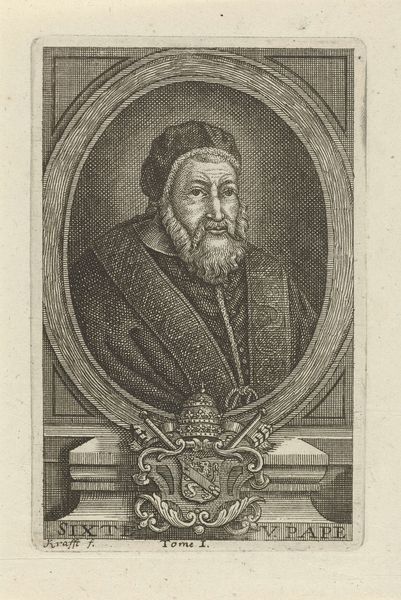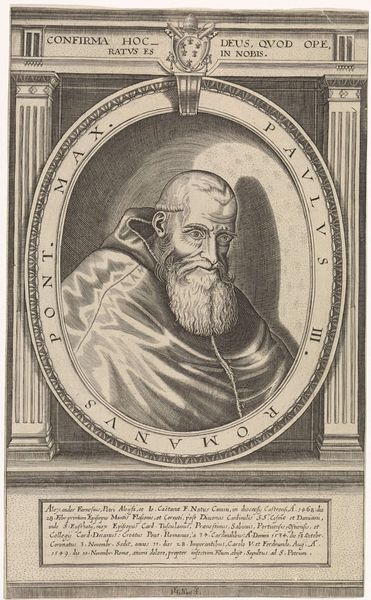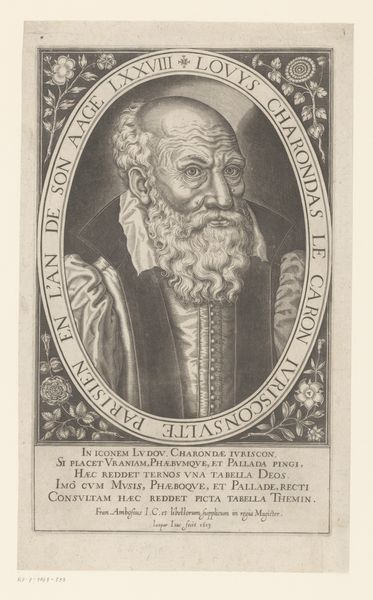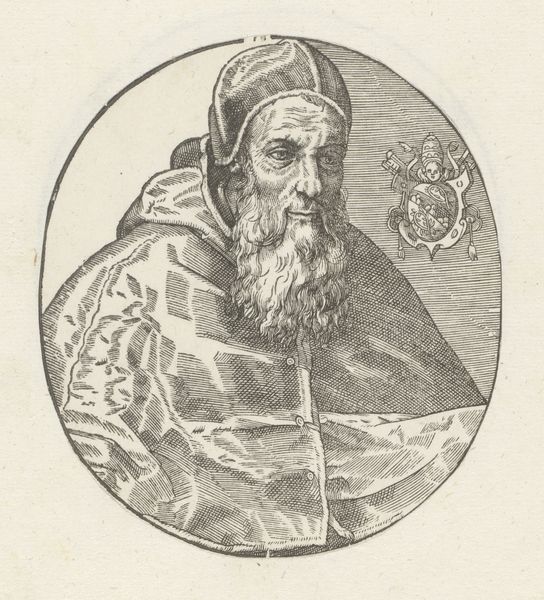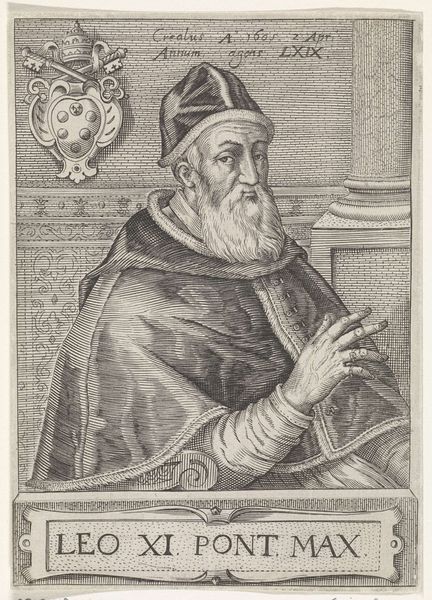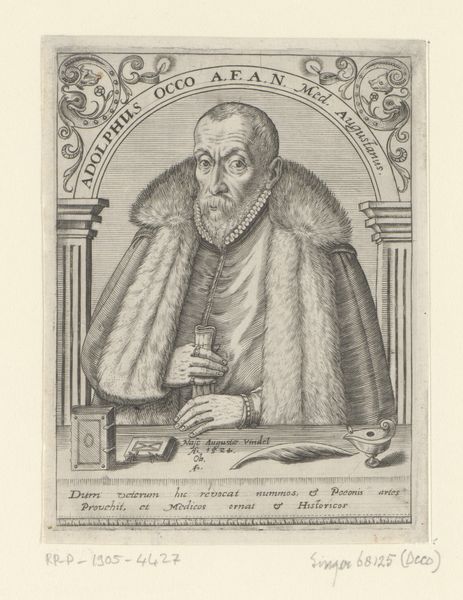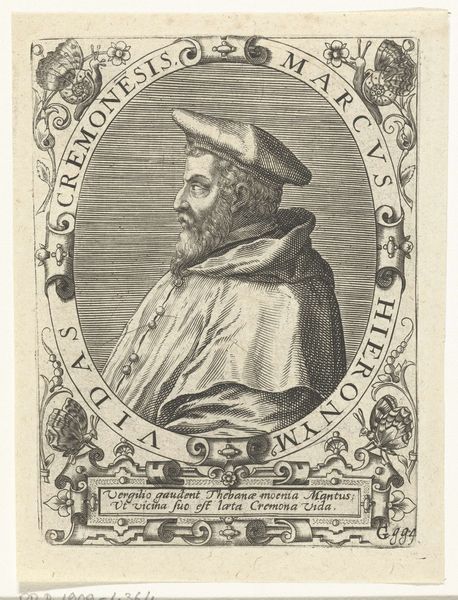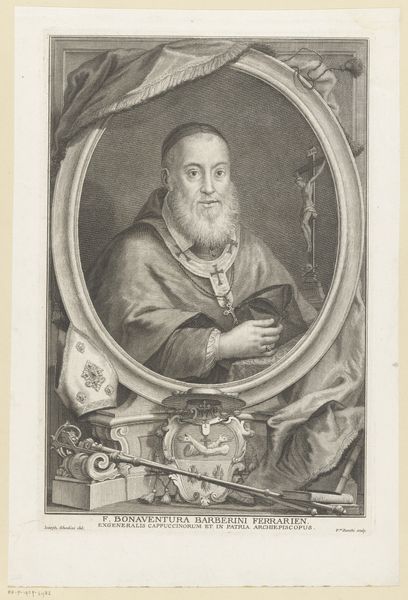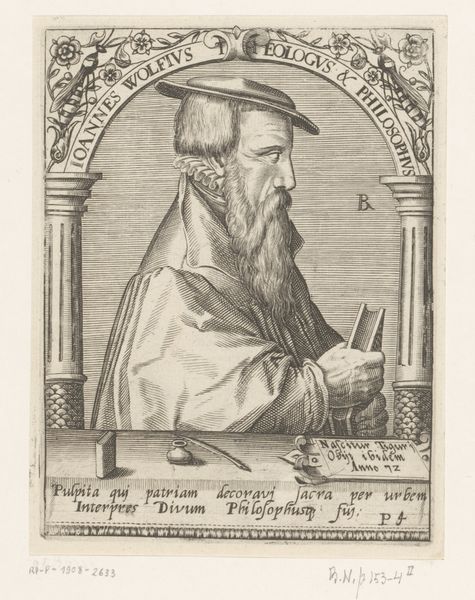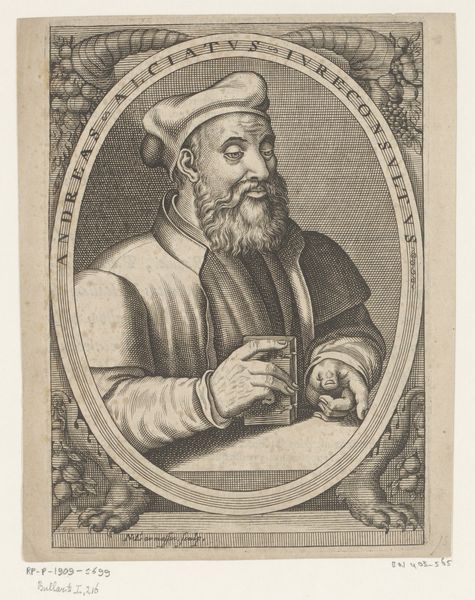
print, engraving
#
portrait
# print
#
old engraving style
#
11_renaissance
#
engraving
Dimensions: height 552 mm, width 413 mm
Copyright: Rijks Museum: Open Domain
Editor: This is a print from 1581, titled *Portret van paus Gregorius XIII*, made by Anton Eisenhoit. It's fascinating; there's a sense of solemn authority in his gaze. What jumps out at you as you look at this portrait? Curator: The image speaks volumes about the papacy's self-fashioning during the Counter-Reformation. Consider the choice of the print medium itself. In a time of religious upheaval, engravings like this became tools for disseminating carefully crafted images of power. It asks who is this figure designed to influence and why? Editor: That's a perspective I hadn't fully considered. I was focused on the detail in the engraving, especially his robes and the ornate frame around the portrait itself. Curator: Precisely. This visual vocabulary reinforced papal authority but where would prints like this have been displayed, and what message would that reinforce, to that audience? Consider how different spaces lend different credibility to an image. The proliferation of papal portraits helped solidify Rome’s place within the European imagination. Editor: So, this wasn't just about creating a likeness of the Pope, but about shaping a particular image of the papacy for public consumption and to influence social views? Curator: Exactly. It's about understanding how these images functioned within a complex web of religious, political, and social forces. Editor: That's given me so much more to think about regarding the power of art to promote agendas. Thanks! Curator: My pleasure. Understanding these prints helps us understand the public role of art, which remains relevant today.
Comments
No comments
Be the first to comment and join the conversation on the ultimate creative platform.
